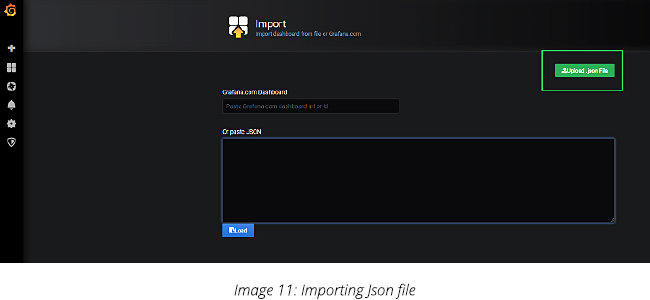


sudo update-rc.d grafana-server defaults 2. sudo apt-get install grafana-enterprise 7. echo “deb stable main” | sudo tee -a /etc/apt//grafana.list 5. sudo apt-get install -y software-properties-common wget 3. sudo apt-get install -y apt-transport-https 2. For installation on Windows, Mac, and other flavors of Linux, please refer the official documentation of Grafana: This article shows installation of the latest Grafana Enterprise edition on Linux VM (Ubuntu 18.04). Functionally identical to the open source version, but includes features you can unlock with a license if you so choose. OSS (Open source) : Functionally identical to the Enterprise version, but you will need to download the Enterprise version if you want Enterprise features.Grafana Provides two versions of the tool: Last but not least, we will describe advantages and limitations of this tool for this use case.Ħ- Advantages of Grafana 7- Limitations SECTION 1 1.
#Grafana json query how to#
The second part will include key dashboards and how to share them. The first part of this article will describe a typical installation, with basic configurations and Azure Monitor as data source.ġ- Installation 2- Configuration 3- Datasource This article will concentrate on using Azure Monitor plugin for Monitoring Azure VMs and various features provided by Grafana for actively monitoring Azure VMs.Īs a prerequisite, VMs should be connected to an Azure Log analytics Workspace, where all the metric data is being captured under Perf Table Grafana is a visualization tool which uses data sources like Azure Monitor, Elasticsearch, CloudWatch etc. MONITORING AZURE VMs USING GRAFANA INTRODUCTION


 0 kommentar(er)
0 kommentar(er)
